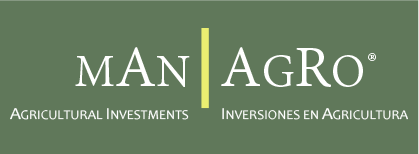Acerca de ciara
Objetives
In 1980, the Argentine Edible Oil Association (CIARA) was set up, with the main objective of protecting and promoting the interests of the oilseed processing industry in Argentina. This institution groups most of the vegetable oil and protein meal producers throughout the country.
To maximize the oilseed industrialization level in order to optimize employment, investment and the capacity for producing national aggregate value. To promote the growth and diversification of oilseed production to ensure a permanent supply of raw material to the industry, under quality conditions which are compatible with the demand requirements of processed products; and to encourage the diversification of agroindustry supply with a view to benefiting the industry as well as agricultural production. To develop technological innovation in the Argentine oilseed sector in order to maintain increasing and sustained quality in all production stages, attempting to preserve the natural resources involved in the activity as well as the environment in which it takes place.
The agro-industrial complex
The oilseed-cereal complex, including biodiesel and its derivatives, accounted for 31.6% of Argentina’s total exports last year, according to data from INDEC (National Institute of Statistics and Censuses).
The country’s main export product is soybean meal (14.2% of the total), which is an industrial byproduct produced by this agro-industrial complex, currently operating with a high idle capacity of nearly 50%. The second most exported product last year, according to INDEC, was corn (11%), followed by soybean oil (6.9%).
Thanks to the location of its ports, Argentina has one of the most important agro-industrial export hubs in the world. It is located in the province of Santa Fe—stretching from the towns of Arroyo Seco to Timbúes—along 70 kilometers of the Paraná River, this central navigable waterway that connects our country to the world.
There are 31 port terminals for various types of cargo, 22 of which ship grains, oils, and soybean byproducts to destinations worldwide.
While the figures vary from year to year, approximately 76% of exports of these products depart from this agro-industrial corridor, with the remaining volume shipped from the port area in the south of the Buenos Aires province.
Click to access the port terminal map.
History
Toward 1980, year of the foundation of CIARA (spanish acronym of Argentine Edible Oil Association), the oilseed oil industry in the country had begun to progressively develop, along with a growing world demand. That year, however, broke out under the influence of the serious international political crisis over Afghanistan, confronting the United States and the Soviet Union, which had taken place in December of the year before. This led to envisage a drop in international prices, also triggered by the surplus in the supplies of the previous cycle. At the turn of 1980, the Argentine soybean harvest was expected to be comfortably around 4.5 million tons (presently, it nears 50 million). With the prospect that the draught affecting Brazil and Argentina would soon end, the world soybean harvest projections for 1980 were of 100 million tons, above the 83 millions of the previous campaign.
According to a report of the National Ministry of Economy and Public Finances, of October 2011, in slightly over a decade, both the soybean sown surface as well as its produce showed an important growth, by 122% and 152% respectively. The strong dynamism evidenced by this crop is explained by the boom of the new technological package “RR Soybean + Glyphosate + Direct Sow”, whose application brought, in turn, a significant rise in productivity owing to:
- Larger and improved weed control.
- Minimum plowing, which favours soil preservation while reducing cultivation cycles, thus encouraging sowing on the same land twice throughout one agricultural campaign.
Ever since this package was applied, soybean has had a rising share in the country’s overall sown area, and the processing industry has increased its milling capacity, in accordance with the growth in oilseed production.
Soybean is the primary oilseed cultivated in Argentina. It stands out significantly, accounting for approximately 93% of production in July 2019, according to a report from the Ministry of Finance.






























